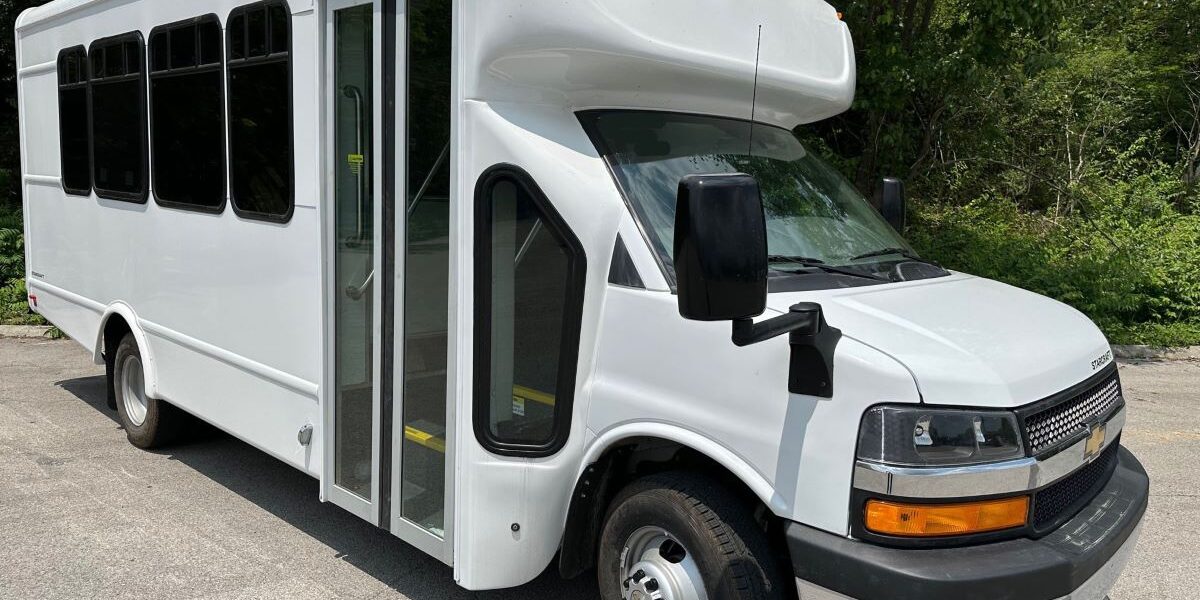By Gerrit Gustafson
Twenty-one years ago, there was no Religious Product News! Hard to imagine, isn’t it?
And 21 years ago, most churches were not even buying buses. They were using those ubiquitous 15-passenger vans.
Vans to Buses
That was until some statistics began to emerge that the 15-passenger vans, when loaded with 10 or more occupants, were dangerous. In fact, they were three times more likely to roll over in a crash than when they were loaded with 5 occupants or less, according to the National Highway Traffic Safety Administration.
The reason was primarily related to the inherent design of those vans, which had a higher-than-normal center of gravity…which was then aggravated by heavy loads, low tire pressure and sudden unexpected turns.
Because they were so popular among churches, though, replacing them with safer buses didn’t happen quickly.
It took the insurance companies raising their rates on these unsafe vehicles to begin to change what churches would use for their transportation needs.
You may remember that some churches made the vans somewhat safer by modifying them to have dual rear wheels and/or removing some of the rear seats.
But, gradually, churches realized that the safer 15-passenger buses already had dual rear wheels, and they were easier to get in and out of, more comfortable to travel in, and still didn’t require a CDL license.
In the last 20 years, one of the two biggest changes in bus buying, especially among churches, is that the 15-passenger bus replaced the 15-passenger van.
The Growth of Paratransit Buses
The second biggest change over the last 20 years is the increase in the percentage of buses sold that are paratransit buses, or buses with wheelchair stations and lifts.
That, of course, reflects a very significant change in the demographics of our population.
According to the Urban Institute, “The number of Americans ages 65 and older will more than double (from 2000) over the next 40 years, reaching 80 million in 2040. The number of adults ages 85 and older, the group most often needing help with basic personal care, will nearly quadruple between 2000 and 2040.”
Just 15 years ago, among the new buses we sold, only 13% were paratransit buses. Last year, 40% of all new buses sold were paratransit. And for 2023, the percentage of paratransit buses ordered or in stock is almost 50% of the total new buses!
As a result of the growth of the paratransit segment, there is now a greater variety of buses and vans available.
Among paratransit buses, the 13-passenger + 2 Wheelchair Stations (13+2) is by far the most popular. Built on Ford or Chevrolet chassis, these can be specially ordered to have up to 4 Wheelchair Stations (WS).
And when you’re not using all of those wheelchair stations, you have the option to fold down seats that will increase the number of non-wheelchair passengers. You can also have larger buses configured for paratransit; the 21+2, for instance, is popular.
Among paratransit vans, the new Ford Transit Forest River Van has become so popular we can’t keep them in stock. It comes as an 8+2 with a Co-pilot seat. Another popular new paratransit option is the 8+2 built on the Ram Promaster chassis.
An even smaller paratransit option that is hard to keep in stock is the Chrysler Van. It comes in either a 5+1 or 4+2 configuration. Both come with co-pilot seats.
Twenty Years from Now
Back 20 years ago, we wouldn’t have seen very clearly these two major changes coming among bus buyers. And it is probably equally difficult to predict what changes the next 20 years will bring.
Electric vehicles and alternative fuel vehicles have not caught on among our customers as quickly as some experts have hoped. Maybe there will be some breakthrough cost-reducing, clean energy source that is only theoretical today that will leapfrog over our current solutions. Let’s hope.
Who knows…maybe the buses in the next 20 years will be amphibious, or even able to fly! But I’m sure when it happens, Religious Product News will be there to report on it all!
Gerrit Gustafson has been the director of marketing with Carpenter Bus Sales for most of the last 20 years and has seen these changes first-hand, www.carpenterbus.com.






